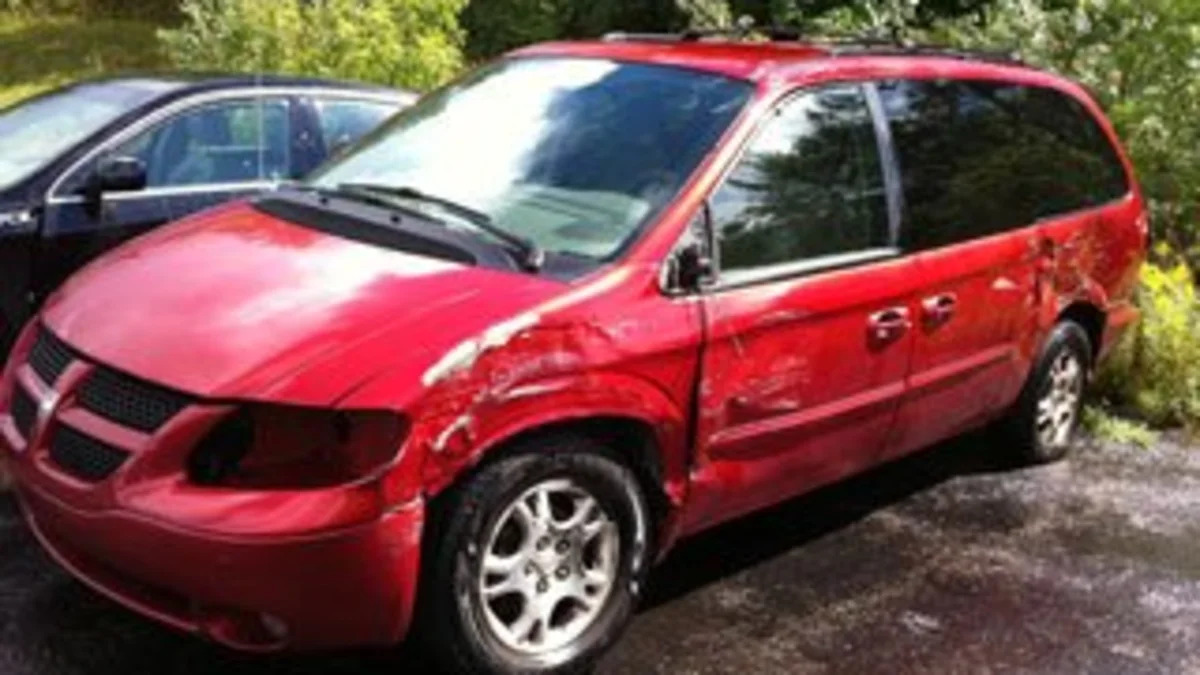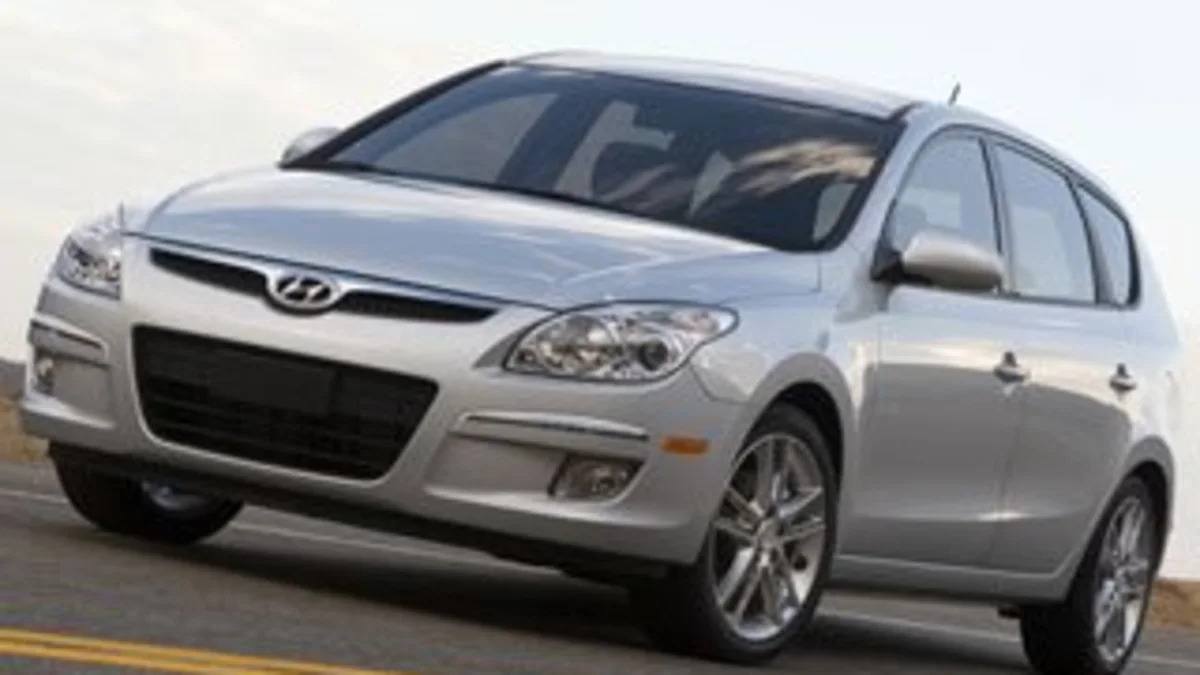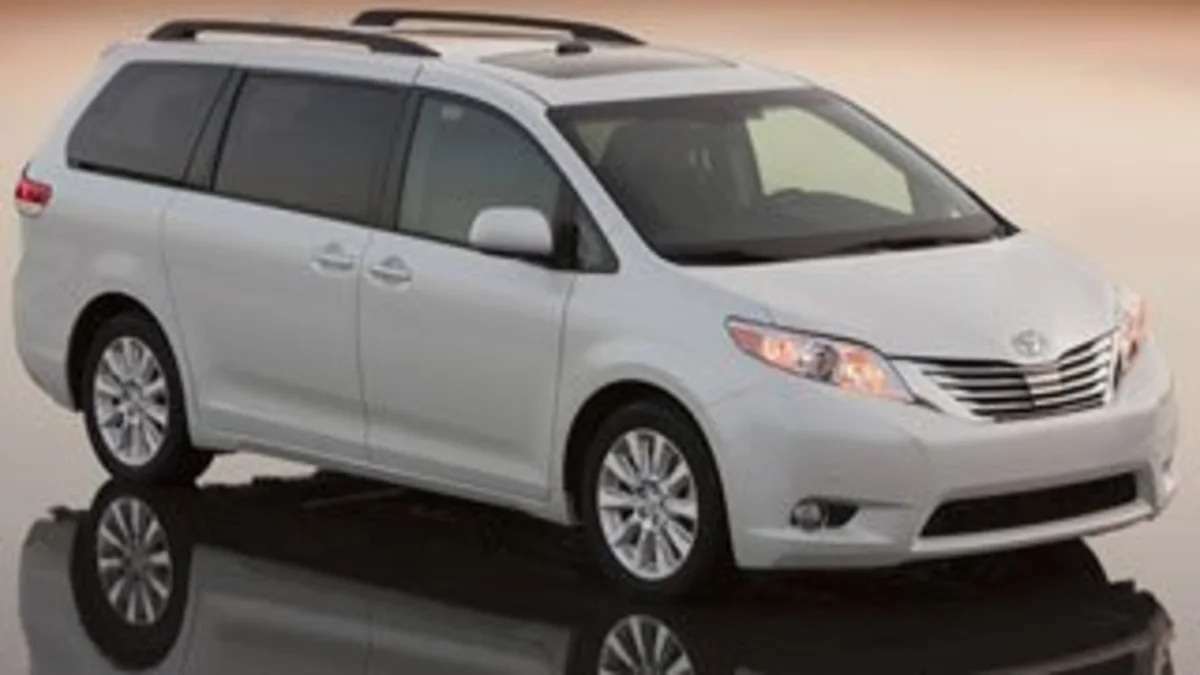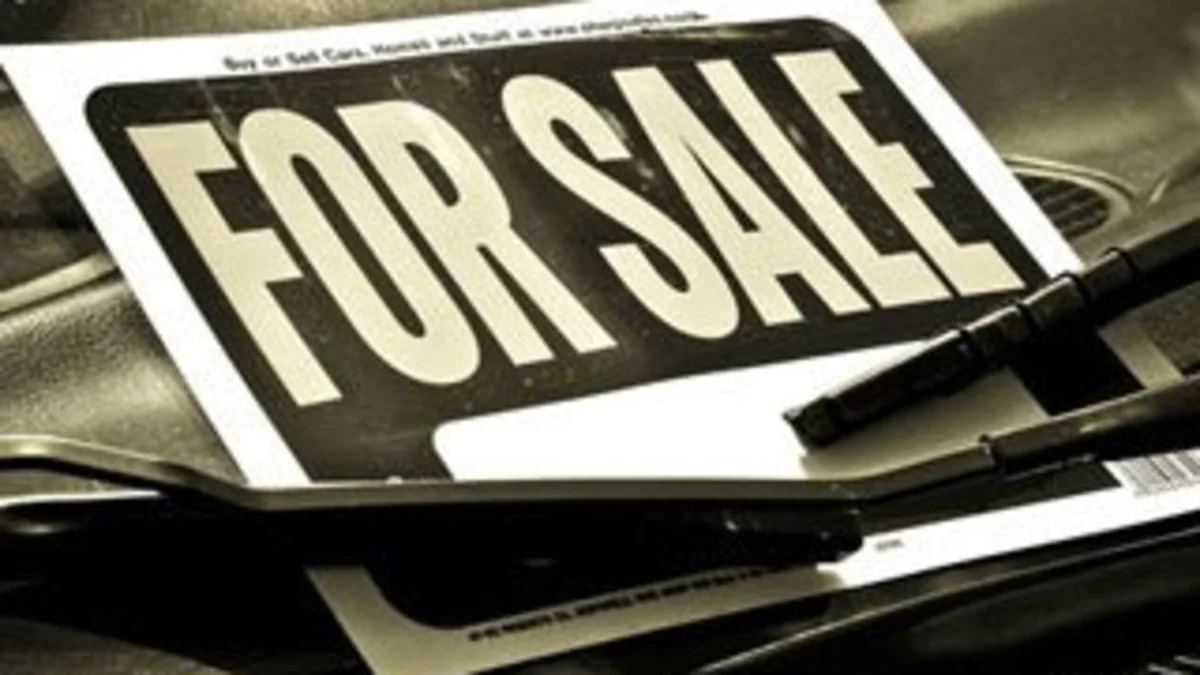defense of the minivan

-

- Image Credit: Getty Images
After over a decade reviewing cars, I've crunched the numbers on hundreds of "what should I buy" comparisons – both real and theoretical. The hard drive of my laptop is littered with Excel spreadsheets plotting out apples-to-apples comparisons by segment and price range. It seems like a week doesn't go by that I am helping a friend or family member shop for a new vehicle.
But what happens when I have to actually buy something myself? One of the most frequent criticisms of car reviewers is that their subjective evaluation of new sheet-metal is clouded by the fact that they drive brand new cars -- seemingly by birthright -- but never actually shell out any cash to own them.
So what follows is my real-life story about shopping for a new vehicle. -
- Image Credit: Jeff Sabatini
Sideswiped
I love to buy cars. I've owned 22 different vehicles in the 22 years I've had a driver's license, despite having a new set of wheels to test-drive almost every week for many years. I drive through used-car lots by force of habit. I peruse used car listings for fun. I'm a sucker for pulling over to check out cars with "for sale" signs in people's front yards, even when I'm not in the market to buy.
But what I don't like is being forced by circumstances beyond my control to buy a new car. That's what has happened this time: A few weeks ago I was on a camping trip 250 miles away from home when my trusty and much-loved 2003 Dodge Grand Caravan was sideswiped. With every body panel on the driver's side smashed, my minivan was a no-brainer to be totaled out, and my insurance company agreed, and quickly cut me a check for the market value of the vehicle.
I'll be honest here – I was growing tired of this minivan already. It still ran well, but it had some cosmetic problems, and the air conditioner had decided to stop working a few days before our trip. With the odometer having recently passed into the six figures, I had been planning on replacing the van in the spring. But regardless of when, I wanted to do it on my terms and my schedule. For me, even despite my depth of knowledge and experience, this usually means spending a month actively shopping. It just plain takes this long to visit enough dealerships to drive at least five different vehicles and consider all the alternatives. -
- Image Credit: Hyundai
Shopping
I have a good friend who works as a salesman at my local Chrysler dealership, so I made that my first stop. While it would be easy to just take my insurance check and sign it over, driving off in a nicely refreshed-for-2011 Chrysler minivan, I'm not actually sure that's what I want to do.
Besides being a parent, I am a cyclist, and I have a 100-pound Labrador, so I have gotten used to the convenience of owning a minivan. For my money, there is no more comfortable and sensible vehicle to be had for a reasonable amount of cash. Yet the car enthusiast in me isn't entirely satisfied, and on the rare occasions I get behind the wheel of my wife's BMW 3-Series I am reminded what I've given up by owning a minivan.
So there are a few other, smaller hatchbacks I'm considering, cars that could still carry my daughter and dog or swallow my bike with ease and be more fun to drive. I'm especially keen on the new-for-2012 Ford Focus 5-door, and I have had a soft spot for the Mazda5 micro-mini-minivan ever since I reviewed it back in 2005. I would covet a hatchback version of Hyundai's new Elantra (or perhaps even better, a Sonata wagon) but we aren't likely to see one for sale until next year. -
- Image Credit: Mazda
My Best Deal
Now, I am not an advocate of buying vehicles like you'd buy meat – by the pound – but the main factor working against these smaller vehicles is that despite having starting prices in the teens, they're still going to carry $20,000-plus price tags once they have the content I want. Even with some cash on the hood, a car like the Focus seems like a whole lot less vehicle for the money than a new minivan.
For instance, the 2012 Ford Focus SEL hatchback carries a $21,100 factory MSRP, although the AOL Autos Best Deals price at the time I write this is $19,856. That's a nice car at a decent price, for sure, but when I see a Dodge Grand Caravan Mainstreet at $22,132 (or a Toyota Sienna V6 at $22,978) on the Best Deals website it seems like a pretty easy justification to spend an extra 11% to get much much more vehicle.
The picture is better with the Mazda5, which can be had for $18,623 in Touring trim, according to AOL Best Deals. The $3,500 I would save getting this junior-sized minivan seems about right considering I'd be giving up almost half the interior space of the Grand Caravan. -
- Image Credit: Toyota
Competitive Comparison
The bottom line is that no matter what factors I consider, I keep coming back to the minivan as my bang-for-the buck choice over any other vehicle. It's the same decision I came to in 2009 when I acquired my now-totaled Chrysler minivan.
The only nagging downside to buying a minivan is the less-than-awesome fuel economy. While Honda sells an Odyssey rated at 28 mpg on the highway, that Touring model is a $38,000 van, even with a discounted price -- well out of my price range. The standard Odyssey is rated only one mile less, but the AOL Autos Best Deals price of $26,945 is still too rich for my blood. No matter how much I love the new Odyssey, it's not thousands of dollars better than the Grand Caravan or Town & Country, which are rated at 25 mpg highway, a single mile per gallon better than the Toyota Sienna.
The Sienna is tempting, and its pricing is a lot closer to Chrysler's than Honda's. Toyota's minivan is better looking than the stodgy domestic duo without going avant garde like the Odyssey styling. I would be happy with any of the big four minivans, truth be told.
It's worth mentioning that there are other minivans from Nissan, Kia and VW that I am not considering, for various reasons. The new Nissan Quest is new but it's a bit too unconventional for me, while the Kia Sedona has been on the market since 2006 is just not competitive with the rest of the market. The VW Routan is a more expensive, but less full-featured variant on the Chrysler minivans. -
- Image Credit: Valerie Everett, Flickr
Used vs. New
This brings us to the wildcard: Buying used. I just don't buy new vehicles, at least not often. The initial depreciation on a new car is just so steep, and the quality of modern cars and trucks is just so good that most can last a decade or more without expensive repairs. So I prefer to buy a pre-owned vehicle that's at least three years old, which is usually the sweet spot for value.
Today though, the market for pre-owned vehicles is so tight and prices so high that I'm seriously reconsidering. This is because 2008 and 2009 were bad sales years for new cars, so there just aren't enough late model used vehicles to satisfy demand. The effect this has had on used car prices is huge. I paid $5,900 for my Grand Caravan in spring 2009. Some 20,000 miles and two-and-a-half years later, AAA paid me $6,100 in my settlement.
While on one hand that's pretty great -- essentially meaning I drove my van for free for a couple years -- I still have to buy a vehicle to replace it in this same market. A six-year-old Chrysler minivan with 80k miles could easily run me over $10,000 today. With auto manufacturers are still putting big incentives on the hood of many new models, and some even offering zero-percent financing, this is certainly a good time to buy new. I still have quite a bit of shopping to do before I make my decision, but I'm going to have to find a screaming deal on a used minivan to keep me out of a new one. -
-






